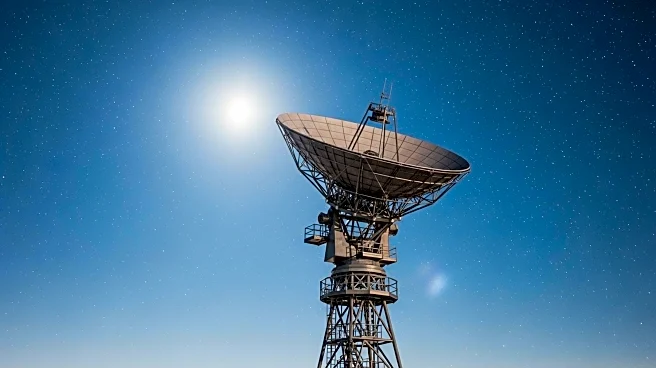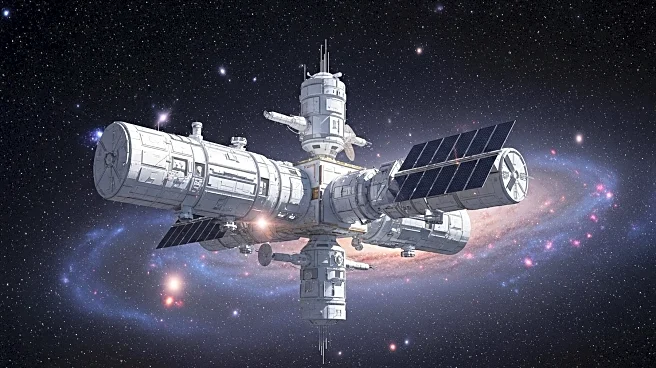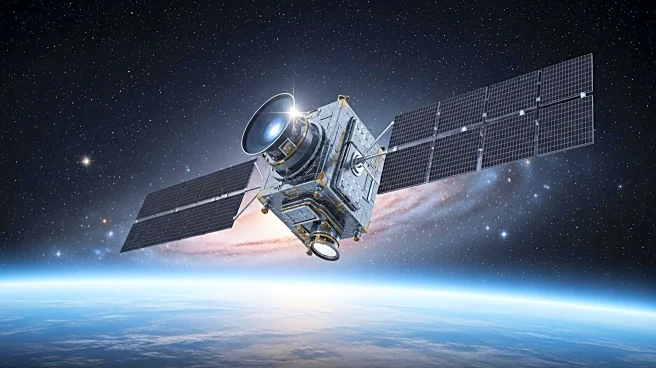What's Happening?
NASA is focusing on reducing the costs associated with space solar power projects, particularly in the realm of distributed space-to-space solar applications. This initiative is part of NASA's broader strategy to enhance the efficiency and feasibility of its missions. The agency has partnered with Ascent Solar Technologies to develop CIGS thin film solar modules, which are expected to significantly lower the mass and volume of solar arrays needed in space. This collaboration is part of a 12-month technology maturation project aimed at making commercial products available for distributed space power infrastructure. The project is expected to support NASA's Commercial Lunar Payload Services and the Artemis Moon mission, among other scientific research programs.
Why It's Important?
The development of cost-effective space solar power systems is crucial for the future of space exploration and commercial space activities. By reducing the mass and volume of solar arrays, NASA can decrease the overall cost and complexity of its missions, allowing for more ambitious projects within the same budget constraints. This could lead to significant advancements in space exploration, including more frequent and sustainable missions to the Moon and beyond. Additionally, the technology developed through this initiative could have broader applications, potentially influencing the commercial space sector and contributing to the development of space-to-Earth solar power transmission in the future.
What's Next?
As NASA continues to develop and test these new technologies, the agency is likely to explore further collaborations with commercial partners to expand the capabilities of space solar power systems. The success of this project could pave the way for more extensive use of beamed power in space missions, potentially leading to new opportunities for scientific research and commercial ventures. Stakeholders in the space industry, including private companies and international space agencies, will be closely monitoring the outcomes of NASA's initiatives to assess potential collaborations and investments.
Beyond the Headlines
The implications of NASA's space solar power initiatives extend beyond immediate cost savings. The development of efficient space-to-space power systems could revolutionize the way energy is managed in space, leading to more sustainable and autonomous space operations. This could also have ethical and environmental implications, as the technology might reduce the need for traditional fuel sources, thereby minimizing the environmental impact of space missions. Furthermore, the advancements in space solar technology could eventually contribute to global energy solutions, offering a new avenue for clean and reliable energy production.










